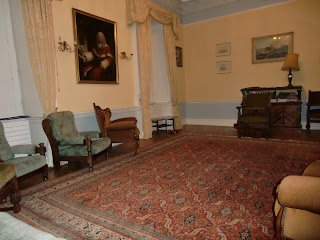Irlanda tiene muchísimos pájaros, pero los únicos que se
atreven a acercarse a Ballyglunin –saben que estamos por aquí– son los cuervos
y los faisanes. Los cuervos son negros y dan algo de ‘repelús’, y no voy a
dedicarles mucho tiempo… ¡ Pero los faisanes son preciosos! Fui el primero en
verlos rondando por el campo de fútbol, y tengo una pluma muy chula en mi
habitación.
Los faisanes son pájaros
que viven en toda Europa, excepto en España y en Rusia (lo siento mucho
por los rusos, pero nosotros tenemos la tortilla de patata para consolarnos). También viven en una parte de Asia y en
Estados Unidos, pero no tengo claro si se refieren a zoos o en libertad. Los faisanes tienen la cola muy larga, sobre
todo las dos plumas del centro. Pueden volar, pero pasan la mayor parte de su vida en el suelo y solo vuelan
cuando se sienten amenazados o cuando quieren subir a un árbol. Aquí hemos
conseguido que echen a volar por ambas razones. Son aves territoriales, y suelen vivir siempre
en el mismo lugar en que nacieron.
Los faisanes comen sobre todo hierbas, bayas frutos
e insectos, entre ellos gusanos babosas y lagartijas. En invierno, y
debido al frío tan intenso, también comen maíz; pero como es muy dulce, no lo
digieren demasiado bien y puede llegar a sentarles mal… y justo por esa mala
digestión, se consigue algo rarísimo:
caca de faisán comestible (¡lo he visto con mis propios ojos!). Pero algo tan
extraño sólo se da en esta región de Irlanda. Aquí en Ballyglunin hay
muchísimos faisanes de éste tipo, y
tenemos 2 disecados a los que les sentó todavía peor el maíz.
Mario Anido
(Slytherin)
Pd: he de reconocer
que la culpa del texto en amarillo la tenemos los monitores. Verles llegar cada día
ilusionados de sus colegios, contando decenas de anécdotas, dan para pensar… Demasiado. Si metes en un mismo saco mucha –pero que mucha– imaginación, un
pelín de mala idea, el maíz con el que nuestros chicos alimentan a los faisanes
de los alrededores, un pastel que no
sale tan bien como queríamos –y de un
color muy parecido a… ese–; le añades un minucioso análisis de los excrementos, 'casualmente',
en el momento exacto en que los chicos llegan del colegio y son todo curiosidad; lo mezclas con D. Miguel envalentonado demostrando que algo tan extraño puede ser comestible, mientras otro monitor añade a wikypedia cierta información no del todo cierta (por supuesto, de manera momentanea)…
Bueno, la broma está servida.
Esa misma noche les contamos que todo había sido una broma, pero el texto de Mario ya estaba escrito.Y quien no se imagine todavía por dónde van los tiros, no tiene más que preguntar por el skype.
Ireland has
a lot of birds, but the only one that are brave enough to come near from
Ballyglunin are the crows and the pheasants. Crows are black and not very nice,
and I´m not going to waste my time with them. But the pheasants are precious! I
was the first that saw the pheasants around the football field, and I´ve
collected a feather so nice.
Pheasants
are birds that live in all Europe, except Russia and Spain (I´m sorry about Russians,
but we have the Spanish omelet to cheer ourselves). They also live in a part of
Asia and the United States, but I´m not sure if it´s referred to the zoos or ‘in
freedom’. Pheasants have a long tail, especially the two feathers in the
middle. Pheasants can fly but they spend most of their life on the ground; only
fly when they feel threatened or when they want to climb a tree. Here, in
Ballyglunin, we´ve got that they fly by both reasons. They are territorials birds, and use to live
in the same place in which they were born.
Pheasants
eat mostly fruits, berries, herbs and insects
including worms, slugs and lizards. In winter, and because the cold weather,
they also eat corn; as this is so sweet, they don´t digest it easily, and it couldn´t agree with them.
But just by this bad digestion, a miracle happens: pheasant´s sheet edible (I
saw this through my own eyes)!. But something so estrange only happens here, in
this area of Ireland. In Ballyglunin we
have many pheasants of this kind, and two of them that digested worse the corn
are preserved in the great hall.
Mario Anido




















